No products in the cart.
No products in the cart.
No products in the cart.
No products in the cart.
Home » Neurological Recovery Blog » Stroke » Understanding Massive Stroke: Secondary Effects & Methods for Recovery
Last updated on February 27, 2020

A massive stroke is a significant medical event that affects the brain. It can be fatal or lead to significant secondary effects such as coma or paralysis. While the prognosis can be grim, there is hope for massive stroke recovery.
This post will explain the potential secondary effects of a massive stroke and steps you can take for rehabilitation. The journey may be long, but with the right approach, many massive stroke survivors can recover.
Use the links below to jump straight to any section:
A stroke occurs when the supply of blood in the brain is compromised. When blood flow in the brain is interrupted by a clot, it’s called an ischemic stroke. When an artery in the brain bursts, causing uncontrollable bleeding, it’s called a hemorrhagic stroke.
When the brain does not receive enough blood supply, brain tissue damage can occur. After a massive stroke, many areas of the brain can be substantially affected or die. While you cannot revive dead brain cells, the healthy areas of the brain can step in to pick up some slack.
Before we dig into that process, it helps to understand the prognosis for a massive stroke.
Medical experts often use the NIH Stroke Scale to determine the severity of a stroke. Patients that score between 21 and 42 (the highest possible score) are considered to have suffered a massive stroke.
When asking your medical team what to expect after a massive stroke, they may use your score to provide a rough prognosis. However, every stroke is different and every recovery will be different. This makes it almost impossible for doctors to provide an accurate prognosis for all patients who suffer a massive stroke.
Therefore, it’s important to follow through with rehabilitation to see what type of recovery is achievable. While one specialist may claim that recovery plateaus after 1-2 years, you might prove that you can see gains up to 5 years later.
In order to get the most from rehabilitation, it helps to understand how the brain recovers from damage like a massive stroke.
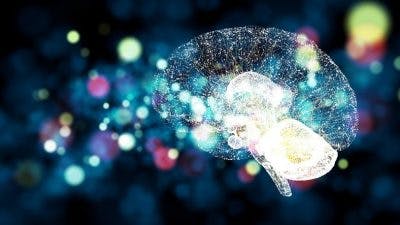
Massive stroke recovery revolves around healing the brain to restore function in the body. Fortunately, the brain has an innate ability to heal itself after injury, even large injuries like a massive stroke.
Through the phenomenon of neuroplasticity, healthy areas of the brain can take over the functions damaged by stroke. While the recovery process takes time and hard work, there is hope for recovery.
Neuroplasticity occurs based on experience. Whatever you are repeatedly exposed to, or whatever you repeatedly practice, are the skills that your brain becomes more efficient with.
This is why stroke survivors often start rehabilitation before they are even discharged from the hospital. The medical team needs to expose the brain to therapeutic experiences to get the recovery process started as soon as possible.
After discharge from the hospital and inpatient therapy, stroke survivors can maximize recovery from a massive stroke by continuing rehabilitation at home. It often takes years to recover from the effects of a massive stroke, but long-term rehabilitation is the best-known way to recover.
Up next, you’ll discover what side effects commonly occur after a massive stroke. Then, you’ll learn over a dozen rehabilitation methods you can use to keep recovery going.
The location of the stroke has a substantial impact on the side effects experienced. For example, a left-hemisphere stroke is more likely to lead to language difficulties than a right-hemisphere stroke; because the language center of the brain resides in the left hemisphere.
Talk to your neurologist to understand where your stroke occurred. This will help you better understand what to expect after a massive stroke.
Here are the most common side effects of a massive stroke:
This is not a complete list because some massive strokes will differ from others. However, these are the most common side effects reported.
Next, we’ll discuss methods for recovery.
Stroke rehabilitation focuses on harnessing the brain’s natural ability to heal itself after injury by exposing the brain to therapeutic experiences. The best results occur when rehabilitation is pursued consistently and long-term.
With that said, here are the best rehabilitation methods for massive stroke survivors:

After a massive stroke, it’s important to keep the limbs moving and stretch them with ROM exercises. This will help prevent spasticity from worsening and help prevent bedsores.
If you ask your doctor what to expect after a massive stroke, they will often mention physical therapy. It’s a critical component for recovering movement after a massive stroke.
Your physical therapist will help guide you through therapeutic exercises that will help retrain the brain to control your muscles. After discharge from inpatient therapy, it’s important to continue with PT at home.
See all physical therapy stroke exercises »
If you struggle with paralysis after a massive stroke, then physical therapy exercises might not be accessible on your own yet. Fortunately, you can start with passive exercise. This is the starting point for many patients during massive stroke recovery.
Passive exercise involves moving your body parts without exerting effort. For example, you can move your affected arm with your non-affected arm. Although you aren’t “doing it yourself,” this movement still helps spark neuroplasticity.
Learn more about passive exercise »
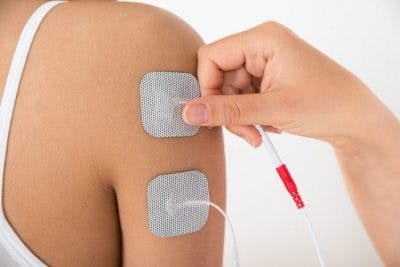
Massive stroke survivors that struggle with paralysis can greatly benefit from electrical stimulation. When electrical currents are applied to the affected muscles, it supplies the brain with a large amount of stimulation. This helps spark the rewiring process. When electrical stimulation is paired with physical therapy exercises, it’s even more effective.
Learn more about electrical stimulation »
Constraint-induced movement therapy can help when arm paralysis occurs after a massive stroke. It involves restricting the non-affected arm while forcing use of the affected arm. This type of rehabilitation therapy is difficult, which can be frustrating for the patient, but it’s clinically proven to be effective.
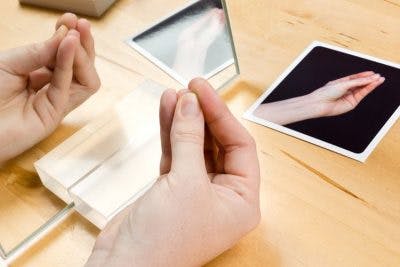
When you ask your medical team what to expect after a massive stroke, and you suffer from hand paralysis, they will likely suggest participating in mirror therapy.
Mirror therapy can help patients recover hand paralysis by tricking the brain into thinking you’re moving your affected hand. It’s likely that your inpatient rehabilitation center will use this therapy, as it’s growing in popularity due to its effectiveness.
Learn more about mirror therapy »
Another great way to spark neuroplasticity is by visualizing your affected limbs moving. In the stroke rehabilitation field, this is referred to as mental practice or motor imagery. Best of all, it’s clinically proven to help improve motor deficits after stroke.
It can be tempting to skip simple rehabilitation techniques like mental practice because of its simplicity. Don’t underestimate it, though. During massive stroke recovery, multiple approaches to rehabilitation can help boost results.
Learn more about mental practice »
Massive stroke survivors that struggle with severe spasticity may benefit from botox injections. This drug helps temporarily reduce spasticity. Although the results are temporary, patients can use the improved mobility to practice rehab exercises. That will address the root cause of the spasticity, leading to long-term results.
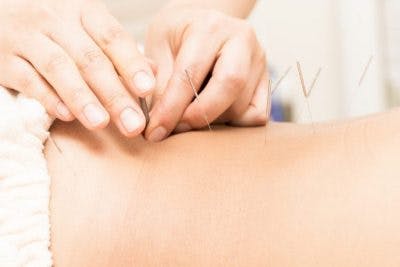
Electroacupuncture is a treatment that combines electrical stimulation with acupuncture. When combined with physical therapy, it has been found to help improve spasticity in patients during massive stroke recovery.
Alternative treatments are making their way into the stroke rehabilitation field. Don’t be surprised if you ask your therapist what to expect after a massive stroke and they mention some form of electrical stimulation.
Learn more about acupuncture for stroke recovery »

If you have some ability to speak, but you need help improving your speech and cognitive abilities, then speech therapy can help. Working with the experts (Speech-Language Pathologists) can also help you regain the ability to swallow, too.
There can be a great need for speech therapy during massive stroke recovery. Many patients will receive help from an SLP for several months after stroke, and then need to continue with therapy at home to continue rehabilitation. Apps like the CT Speech & Cognitive Therapy App can help with this.
Learn more about speech therapy »
If a stroke patient cannot talk at all, they might be able to sing their words. That’s because singing is controlled by the right hemisphere while talking is a left hemispheric function. Singing therapy takes hard work, but it provides hope for getting your voice back.
Learn more about singing therapy »
If you struggle with changes in sensation after massive stroke, like numbness or tingling, then sensory reeducation exercises can help. They retrain the brain how to process sensory input, which may help improve sensory issues like numbness.
Learn more about sensory reeducation »
Vision training can help improve vision problems in some stroke survivors. These programs utilize various eye exercises to help retrain the brain how to process visual input.
Learn more improving your sight after a stroke »
A massive stroke is a significant medical event that can alter major abilities, such as movement and communication. Although the side effects can be severe, the brain is capable of recovering from the damage through therapy.
Patients who survive a massive stroke should participate in rigorous rehabilitation programs to recover as much movement as possible. Other therapies recommended by the medical team, such as speech therapy, should also be pursued.
The road to recovery will look different for each massive stroke survivor. Patients can find hope in neuroplasticity: the brain’s innate ability to rewire itself and bounce back from injury.
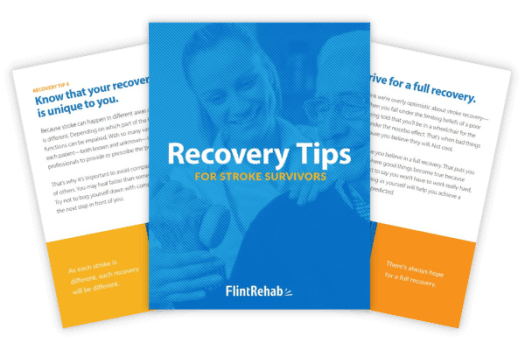
Get our free stroke recovery ebook by signing up below! It contains 15 tips every stroke survivor and caregiver must know. You’ll also receive our weekly Monday newsletter that contains 5 articles on stroke recovery. We will never sell your email address, and we never spam. That we promise.

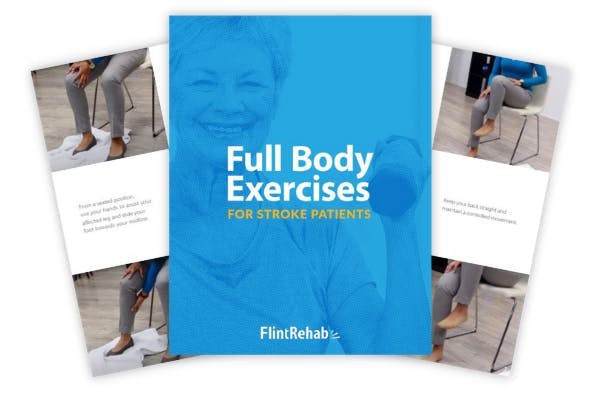
Do you have these 25 pages of rehab exercises?
Get a free copy of our ebook Full Body Exercises for Stroke Patients. Click here to get instant access.
“My name is Monica Davis but the person who is using the FitMi is my husband, Jerry. I first came across FitMi on Facebook. I pondered it for nearly a year. In that time, he had PT, OT and Speech therapy, as well as vision therapy.
I got a little more serious about ordering the FitMi when that all ended 7 months after his stroke. I wish I hadn’t waited to order it. He enjoys it and it is quite a workout!
He loves it when he levels up and gets WOO HOOs! It is a wonderful product! His stroke has affected his left side. Quick medical attention, therapy and FitMi have helped him tremendously!”
FitMi is like your own personal therapist encouraging you to accomplish the high repetition of exercise needed to improve.
When you beat your high score or unlock a new exercise, FitMi provides a little “woo hoo!” as auditory feedback. It’s oddly satisfying and helps motivate you to keep up the great work.
In Jerry’s photo below, you can see him with the FitMi pucks below his feet for one of the leg exercises:
Many therapists recommend using FitMi at home between outpatient therapy visits and they are amazed by how much faster patients improve when using it.
It’s no surprise why over 14,000 OTs voted for FitMi as “Best of Show” at the annual AOTA conference; and why the #1 rehabilitation hospital in America, Shirley Ryan Ability Lab, uses FitMi with their patients.
This award-winning home therapy device is the perfect way to continue recovery from home. Read more stories and reviews by clicking the button below:
Grab a free rehab exercise ebook!
Sign up to receive a free PDF ebook with recovery exercises for stroke, traumatic brain injury, or spinal cord injury below: